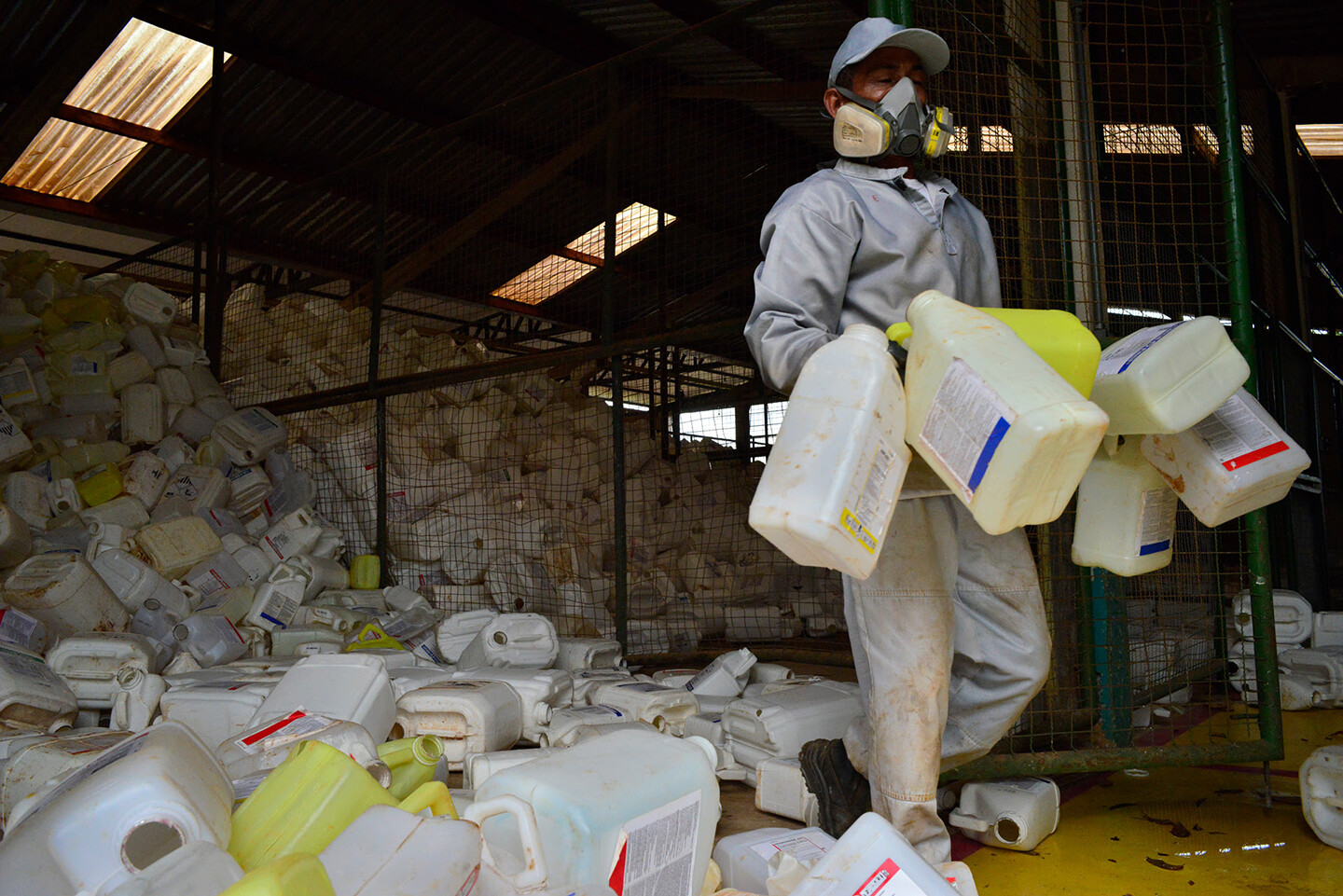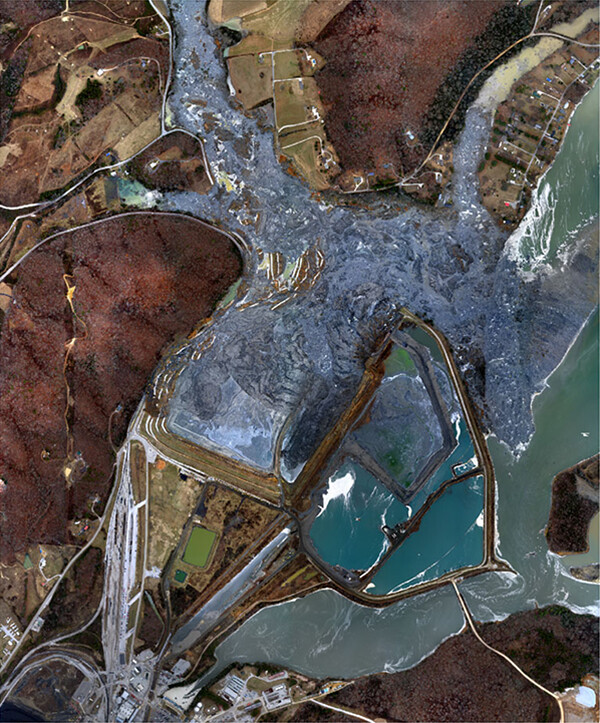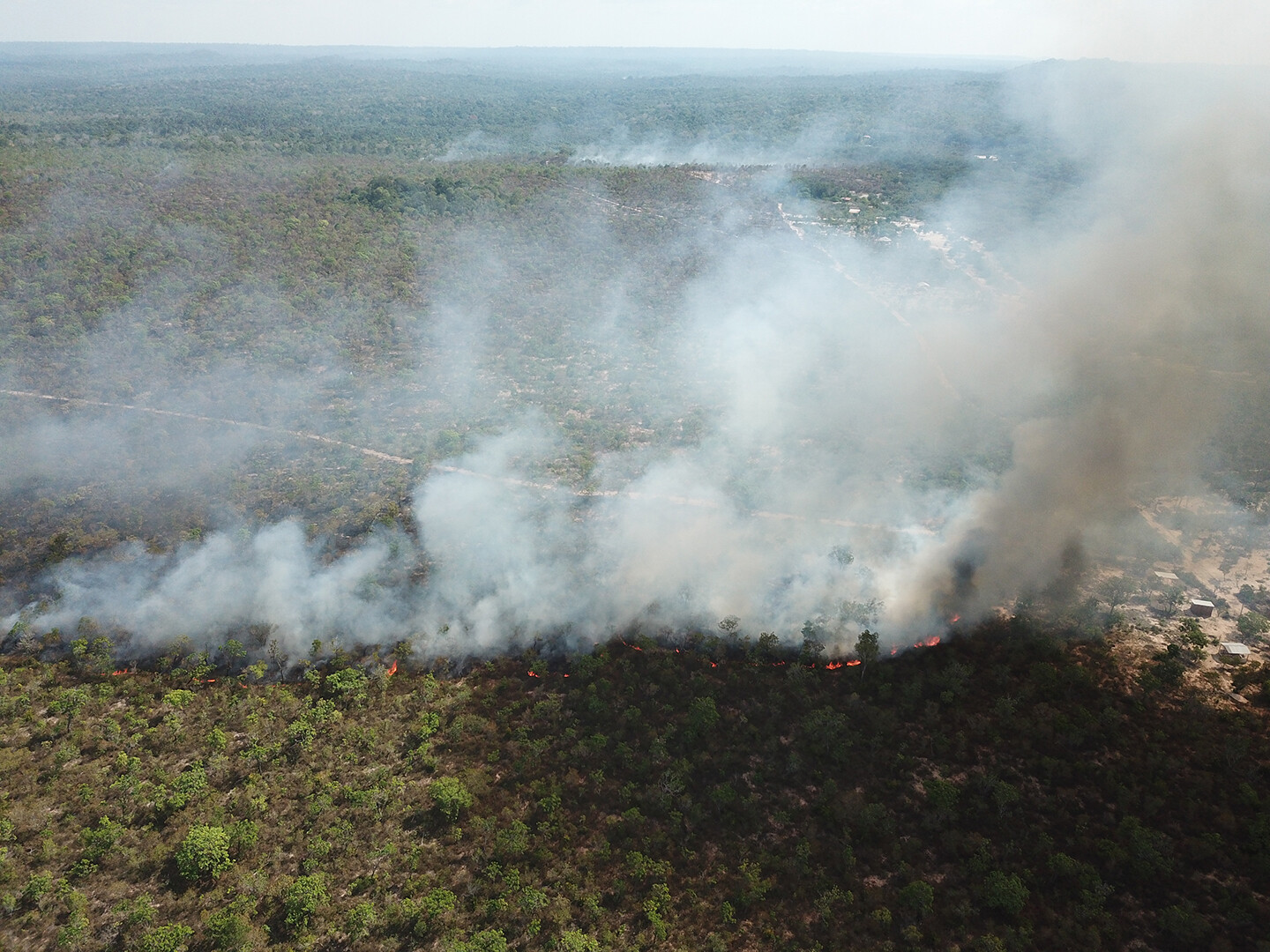1.
In September of 2019, a forest fire consumed an area equivalent to 1,647 soccer pitches in the village of Alter do Chão’s Environmental Protection Area, near the city of Santarém in the northern Brazilian state of Pará. By the time it had engulfed this part of the protected forest, it was already widely known that the “Day of Fire,” August 10, 2019, a month earlier, had been an action coordinated by farmers from Novo Progresso, which is also in Pará. The Day of Fire was the day when rural cultivators located near the BR-163 highway mobilized a series of illegal burn-offs that increased the number of forest fires by 300 percent from one day to the next. The impact of the ash was felt as far away as São Paulo, where day was turned into night.
I did not follow either the Day of Fire or the Alter do Chão blaze closely. But I found myself sucked into the eye of the hurricane by yet another event, one that also linked fire and authoritarianism.
I was finishing a long investigative report on how the toxic pesticide used by a soy plantation currently expanding across the Planalto Santareno region has choked out riverside communities, ultimately forcing the residents to leave. Early in the morning of that project’s final day, reports began to circulate about a large operation which had detained four members of the volunteer fire brigade from Alter do Chão and carried out a search-and-seizure raid at the headquarters of Projeto Saúde e Alegria, an NGO that works to promote the health of Indigenous and other riverside communities in the region. The central accusation was that members of the brigade had actually started the forest fires themselves in exchange for payments from international donors.
The investigation’s premise was hardly credible. Many of the firefighters had an alibi: they hadn’t even been in Alter do Chão on the day the fires were set. After months of legal proceedings, no connection between the brigade members and the fires was proven, and charges were dismissed in February 2021.


A pesticide deposit in Lucas do Rio Verde. Photo: Lunaé Parracho.
I don’t want to dwell on the specifics of that case; it was hard enough to keep up with everything as it was happening. But there is one specific point that I’d like to focus on here: I got the distinct impression that state institutions were lending concrete form to one of former president Jair Bolsonaro’s most oft-expressed fantasies: that NGOs had started the fires in order to raise funds for their operations. It was as if the incident had sufficient performative power to convert a preposterous theory into abject reality: a mechanism in this case powered by fire as its theme, motto, and method.
Of all the natural elements, fire is perhaps the most appropriate lens through which to consider political projects anchored in destruction. And not without good reason: politics often uses fire to achieve its goals. The Tribunal of the Holy Office of the Inquisition burned women, heretics, and books. After suffocating Jews and Gypsies in the gas chambers, Nazis burned their bodies in order to spread their ashes and fertilize the soil. What follows here is a reflection on this new relationship between fire and politics, generated by the interaction between new authoritarianisms and the Pyrocene age.
2.
“Pyrocene” is a term coined by the American environmental historian Stephen Pyne that refers to a new geological era which human beings have brought about through the uncontrolled use of fire. It is an attempt to present another facet of the Anthropocene age: a term much debated over the last decade which intends to define the era during which human activity has drastically transformed the earth’s landscape to the point of giving rise to a new geological era.
There is no consensus among researchers dedicated to the subject as to precisely when this new era began or what its name should be. Hence the invention of terms such as “Capitalocene,” “Plantationcene,” “Carbonocene,” “Industrialocene,” and of course “Pyrocene.”1
I have never found it productive to debate which term may be the most appropriate; I prefer to focus on understanding what each one emphasizes and the dynamics they may help us to perceive.
For Pyne, the Pyrocene refers to a new age produced by humans in which everything is for burning, whether in the sense of fossil fuels to power cars and trucks or massive forest fires. “The Pyrocene proposes a fire-centric perspective on how humans continue to shape the earth,” he writes.2 But it’s also about a loss of control: about rampant, unchecked wildfires. Just as an ice age implies that ice will lead to more ice, so an age of fire means fire begetting more fire.


Aerial photograph of the site of the Kingston Fossil Plant coal fly ash slurry spill taken the day after the event, 2008. License: Public Domain.
The author draws a distinction between three kinds of fire. The first is burning that arises naturally and which has been appearing on this earth ever since plant life first colonized the planet. This kind of fire is most often caused by lightning strikes on dry areas of land. The second is fire as used by humans. Pyne argues that through the act of cooking both humans and fire have evolved together across millennia. This was an act of domestication—perhaps, even, the basis for the model of domestication to be replicated with crops and farm animals. As such, a mutually beneficial relationship came into being: humans brought fire with them everywhere they went, using it to shape living landscapes and agricultural systems. At this point, as Pyne says, “fire could exist without humans while humans could not exist without fire.”3
The third kind of fire is qualitatively distinct to the degree that it sunders this age-old relationship. This is the burning of fossil fuels, no longer confined by ecological limitations such as seasons or varying periods of drought and humidity. People might live without it, but this kind of fire could never flourish without people. If the second form of fire was a kind of partnership, this third one has been turned into a tool for the cultivation of power.
Pyne argues that during the previous century this third kind of fire ensured that the second type began to disappear. Our contemporary fires have grown into ferocious, savage blazes that seem to infect everything. “Feral ecologies,” as anthropologist Anna Tsing puts it. In other words, “ecologies that have been encouraged by human-built infrastructures, but which have developed and spread beyond human control.”4
The quest for power afforded by the use of fossil fuel–burning to generate extraordinary quantities and concentrations of energy has led to humans creating this age of fire.
3.
I’d like to offer an image to help visualize the connections between the Pyrocene and authoritarianism. Not a precise, specific image, but rather an ordinary, everyday act for a significant portion of humanity: starting a car. By turning the key, the driver triggers ignition, which is nothing more than the generation of fire in the form of a spark, no different than rubbing two sticks together. But in this case, the spark depends on a battery that produces a large electrical discharge. Once the spark has been ignited, it burns a mixture of fuel and air, which in turn generates heat and pressure that move the pistons and set the vehicle in motion.
In a very real way, this is an everyday reenactment of the Promethean myth of stealing and taming fire: a controlled, spark-shaped flame. This combustion is a representation of commanding power and carries within it the unbridled potential of this unstoppable burning.
This man-machine relationship, this trivial little ignition system, seems to have forged the very notion of Western democracy. Not only have a century’s worth of cities been designed for vehicular traffic, but the entire model of social and political organization in Western democracies is anchored in the consumption of fossilized sources of energy: a process which dumps carbon into the atmosphere, fomenting global warming.
In nineteenth-century England, coal-burning generated a massive amount of energy compared with the surface area required to obtain the fuel. It was this new dynamic that allowed for the emergence of urban conglomerates that were increasingly dense and dependent on mines in the northern part of the country. The abundance of energy, and the reliance on distant regions, delineated the very functioning of democracy, as the political scientist Timothy Mitchell argues in his book Carbon Democracy.5
I suggest we think freely about some of the ramifications of Mitchell’s thesis around a central question: To what extent does this political model anchored in fossil fuels bring about its own downfall and the advent of new authoritarianisms?
It’s worth posing the question in pyrocentric terms. The Pyrocene implies the use of fire as an instrument of power: industrial combustion, our third type of fire, which is entirely distinct from the natural fire caused by lightning strikes and the anthropogenic fire with which humans carved out so many different landscapes around the globe. This third kind of fire is what introduced the pretense of control and power. It’s what brought combustion into modern cities capable of producing the flames, energy, and smokeless heat that forged the Pyrocene. And it’s important to indicate ways in which connections can be drawn between the advent of the Pyrocene era and the emergence of new authoritarianisms: two developments marked by fundamentally destructive dynamics.
For decades, the political philosopher Wendy Brown has been highlighting how the increasing acceptance of neoliberalism in all aspects of life erodes the foundations of democracy, as conceived in its Western liberal model. For Brown, under neoliberalism, each individualized subject is seen as malleable based on models of business performance and profit-making. In her 2019 book In the Ruins of Neoliberalism: The Rise of Antidemocratic Politics in the West, Brown investigates how neoliberalism is creating the conditions for the emergence of new authoritarianisms.
Neoliberalism’s manifest war against civil society, against all means of seeking justice and redressing inequality, has opened up a space in several Western democracies for a populist, racist, sexist, and white supremacist reaction founded on traditionalist Christian values. As Brown argues, inspired by the precepts of theorists such as Friedrich Hayek, neoliberalism excludes certain spheres of life from political regulation by means of public debate and political processes. Thus, neoliberalism rests on an antiquated morality cultivated through centuries of imperialism and enslavement.6
My argument, however, is that neoliberalism also assumes as normative the expansion of an extractive-predatory modality in its relationship with a natural world cultivated over centuries through processes of ecological simplification and the insertion of both living and lithic landscapes into the chains of production. For this reason, theorists such as Jason Moore argue that capitalism does not produce an ecology, but rather that it is, itself, an ecological regime, since it creates not only patterns of socio-natural relationships, but also, I would add, patterns of planetary destruction.7
To bolster this argument, I suggest following the proverbial trail of breadcrumbs left by the environmental devastation currently occurring in Brazil, and treating this as a guiding principle.


A MITECO Forest Fire Fighting Brigade. MITECO archive.
The goal of making Brazil “the world’s breadbasket,” as the agribusiness lobby has framed it over the last two decades, found broad support from former president Bolsonaro in his neocolonial endeavors. Their project took material form in the cultivation of crops to feed hogs and chickens in Europe and China, while bringing hunger and environmental devastation to traditional, Indigenous, and quilombola Brazilian communities either living in the shadow of these industrial enterprises or being forcibly removed in order to make room for monoculture farming.
One example is the situation of the Indigenous Xavante people of Mato Grosso state during the Covid-19 pandemic. In an article I coauthored with Tatiana Merlino, we noted some alarming data, first published in an epidemiological study in late 2020: between February 23 and September 3 of that year, the Xavante people had a mortality rate of 341 deaths per 100,000 inhabitants.8 This is five times higher than the national average of 69.5 deaths per 100,000 people during the same time frame.
Intrigued, we dug deeper, trying to understand the reasons behind the discrepancy. Cut off from their traditional lands by giant agricultural firms, their rivers contaminated with pesticides, and unable to continue producing their own traditional foods, the Xavante people now largely depend on highly processed foods whose high sodium and sugar content is linked to several diseases including hypertension and diabetes. Today, corporate farming is encroaching even deeper into Xavante territory, thanks in part to encouragement from the former president of FUNAI (Brazil’s National Indigenous People Foundation), who was also a member of the Bolsonaro regime, and from the Office of the Federal Prosecutor.
It’s no coincidence that Aprosoja-MT—the Association of Soy and Corn Producers of the State of Mato Grosso—is one of the most unconditional and ardent supporters of Bolsonaro and his delusions. As the anthropologist Alana Moraes observes, “Agribusiness is this government’s primary guarantor; it’s in the DNA of neocolonial fascism, of this capitalism of suffocation and ‘pacification.’”9 In the Amazon, agribusiness’s zeal for expansion is creating a new ecology of fire. As Letícia Klein and Thiago Medaglia write,
The Amazon is not supposed to catch fire. The most biodiverse forest on the planet is humid, teeming with tree trunks covered in lichen and spongy moss, all of them accustomed to the morning mist. Each canopy in the Amazonian forest, through evapotranspiration, pumps hundreds of liters of water into the atmosphere every day—the largest trees pump thousands—as a result of a unique combination that involves geographic location, vegetation cover, and atmospheric systems in action. This part of South America provides rain for itself as well as for other regions of Brazil and the continent, which helps to explain the fact that its over 8,000 known tree species lack the evolutionary adaptations to fire found in savanna and boreal forest species. Such a unique ecosystem requires human intervention for it to burn. And that’s what has been happening.10
The Pyrocene was also sparked by a pyrophobic practice. Cities designed for cars tolerate only one type of fire: the combustion of fossil fuels. Nothing besides natural gas, ethanol, or gasoline can be burned. The indiscriminate adoption of this model of intolerance to fire in natural settings has led only to firepower running entirely out of control, particularly in certain landscapes where it traditionally held long-term, evolutionary functions, such as the Cerrado, the Brazilian savanna. Perversely, contemporary pyrophobia has uncovered its own culprits, having become a structural element of Brazilian authoritarianism and having criminalized the use of fire by Indigenous, riverside, and other traditional communities—as Bolsonaro did at the UN General Assembly in 2020 when he encouraged the use of fire by land-grabbers and deforesters.
Once again, we find ourselves facing the fallout of the democracy-led energy-supply model developed in nineteenth-century England, in which vast tracts of land were destroyed, subjected to violence, processes of degradation, and excessive toxicity in the name of energy production, whether in the form of fossil fuels or grain with a high protein content. The Western model of democracy has created sacrificial landscapes where both concepts—landscapes and democracy alike—may be sacrificed to wildfire.
4.
If we are walking blindfolded into an age of fire, what is certain is that new forms of authoritarianism, currently flourishing in the deserts created by neoliberalism, did not themselves forge the Pyrocene. It is the neoliberalization of nature, its intensive process of ecological simplification11—think of what it means to convert a tropical rainforest into a monocultural soy field—that seems to be a major driving force behind both authoritarian regimes and the Pyrocene. Raging wildfires and the new forms of tyranny share a very real disdain for diversity. Both work to destroy differences; both seek to reduce the multiplicities of life to ashes.
See Christophe Bonneuil and Jean-Baptiste Fressoz, The Shock of the Anthropocene: The Earth, History and Us (Verso, 2017).—Eds.
Stephan J. Pyne, “Welcome to the Pyrocene,” Grist, August 18, 2021 →. See also Pyne’s book The Pyrocene: How We Created an Age of Fire, and What Happens Next (University of California Press, 2021).
Pyne, “Welcome to the Pyrocene.”
See Anna Tsing’s multimedia project Feral Atlas →.
Timothy Mitchell, Carbon Democracy: Political Power in the Age of Oil (Verso, 2011).
Wendy Brown, In the Ruins of Neoliberalism: The Rise of Antidemocratic Politics in the West (Columbia University Press, 2019).
Jason W. Moore, Capitalism in the Web of Life: Ecology and the Accumulation of Capital (Verso, 2015).
“Surrounded by Agribusiness, Xavante Territory Suffers a High Death Rate from Covid,” InfoAmazônia/O Joio e o Trigo/El País, 2021.
Alana Moraes, “The War of the Worlds, Colonial Wounds, and the Aspiration for Collective Determination and a Dignified Life,” interview by Patrícia Fachin, Revista do Instituto Humanitas Unisinos, 2021.
Letícia Klein and Thiago Medaglia, “Smokescreen,” Ambiental Media, 2020 →.
For more on this concept, see Marc Peipoch, et. al., “Ecological Simplification: Human Influences on Riverscape Complexity,” BioScience 65, no. 11 (November 2015): 1057–1065.
Category
Subject
Translated from the Portuguese by Sophie R. Lewis and Ezra E. Fitz. This essay was first published in Jornal Nossa Voz, publication of Casa do Povo (Brazil)

